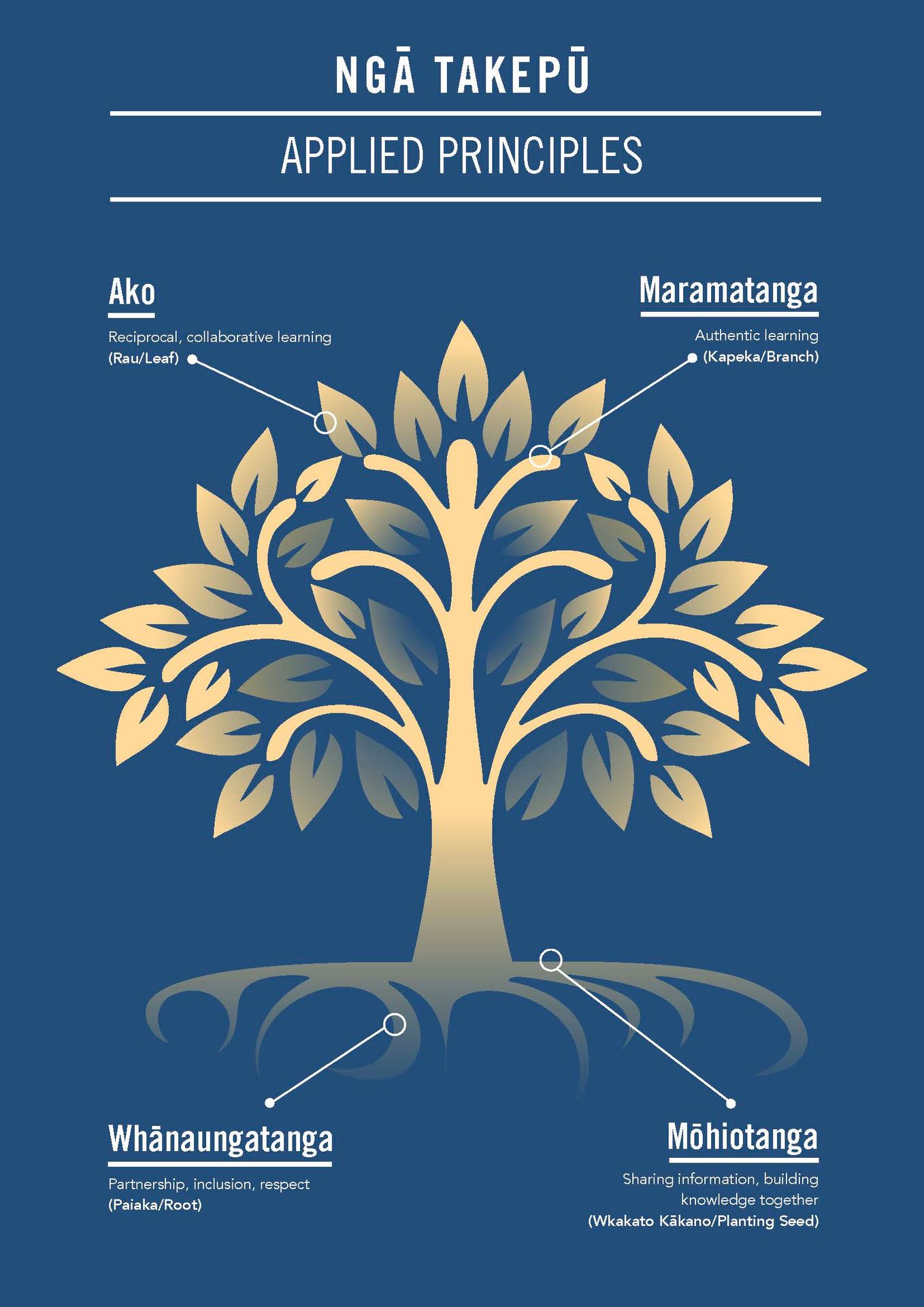Bodhi's Conceptual Framework
Bodhi’s conceptual framework, symbolised by the Bodhi Tree, positions the six Teaching Council Standards within a progression of growth — from deep cultural roots, through the branching of learning and relationships, to the canopy where professional identity and leadership emerge. This metaphor shapes how the Standards are emphasised, sequenced, and scaffolded across Years 1–3 of Bodhi's programmes.
Conceptual Framework
Roots (Whānaungatanga) provide the foundation. The Standards of Te Tiriti o Waitangi Partnership (Standard 1) and Professional Relationships (Standard 3) are emphasised from the beginning of the programme, ensuring ākonga are grounded in bicultural practice, reciprocity, and respectful partnerships with tamariki, whānau, hapū, and iwi. These Standards underpin all other learning.
Trunk and Branches (Ako, Māramatanga) represent the growth of professional knowledge and practice. Standards such as Learning-Focused Culture (Standard 4) and Design for Learning (Standard 5) emerge as ākonga deepen their understanding of curriculum, pedagogy, and inclusive practice. Here the emphasis is on applying Te Whāriki, assessment for learning, and creating equitable, safe, and inclusive learning environments.

Canopy (Mōhiotanga, Māramatanga reaching upward) reflects professional identity, leadership, and inquiry. The Standards of Professional Learning (Standard 2) and Teaching (Standard 6) are emphasised most strongly at the canopy stage, when learners are preparing to graduate. By this stage, ākonga move from guided practice to independent mastery — critically inquiring into their own teaching, producing research-informed outputs, and demonstrating leadership and advocacy in practice.
While all six Standards are present across the programme, the relative importance shifts with progression:
Standards 1 & 3 (Roots): foundational and non-negotiable, most emphasised in Years 1–2.
Standards 4 & 5 (Branches): developing through Years 2–3, as students design and implement inclusive curriculum.
Standards 2 & 6 (Canopy): culminating in Year 3 through independent teaching, inquiry, and leadership.
This approach ensures that graduates not only meet the Standards, but embody them in a way that reflects Bodhi’s kaupapa — grounded in relationships, growing through knowledge, and reaching outward as leaders and advocates in the ECE sector.
Conceptual Framework
Paiaka/Roots – Whānaungatanga (Partnership, Inclusion, Respect):
Foster meaningful, reciprocal relationships between student teachers, educators, whānau, and communities.
Build a learning culture grounded in trust, collaboration, and mutual respect.
Promote a sense of belonging for all student teachers, recognizing and valuing their diverse identities, experiences, and contributions.
Kapeka/Branches and Rau/Leaves – Ako (Reciprocal, Collaborative Learning):
Encourage student teachers to engage in reciprocal learning partnerships with mentors, peers, and tamariki in their field-based practice.
Integrate equitable and culturally responsive teaching strategies that draw upon student teachers’ unique cultural and life experiences.
Create learning environments that nurture the mauri/life force of student teachers, enabling them to grow and thrive professionally.
Wakato Kākano/Seed – Mōhiotanga (Sharing Information, Building Knowledge Together):
Support student teachers in developing deep knowledge and awareness through collaborative learning and critical reflection.
Equip them with tools to co-construct knowledge alongside tamariki and whānau during their practice.
Encourage the recognition of prior learning and experiences as a foundation for professional and academic growth.
Akaaka/Vines – Māramatanga (Authentic Learning):
Provide opportunities for student teachers to gain clarity, insight, and meaningful understanding of ECE pedagogy and practice.
Promote ethical, reflective teaching practices that respect and celebrate cultural diversity.
Ensure learning is relevant and practical, connecting theory to real-world application in diverse ECE settings.
